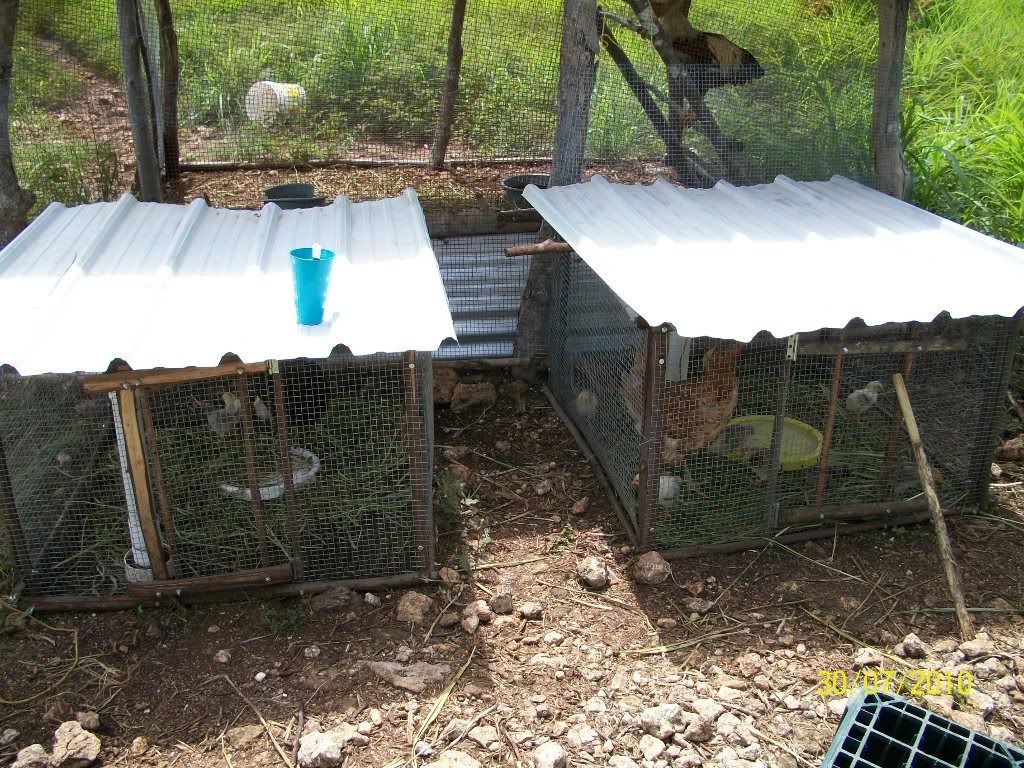
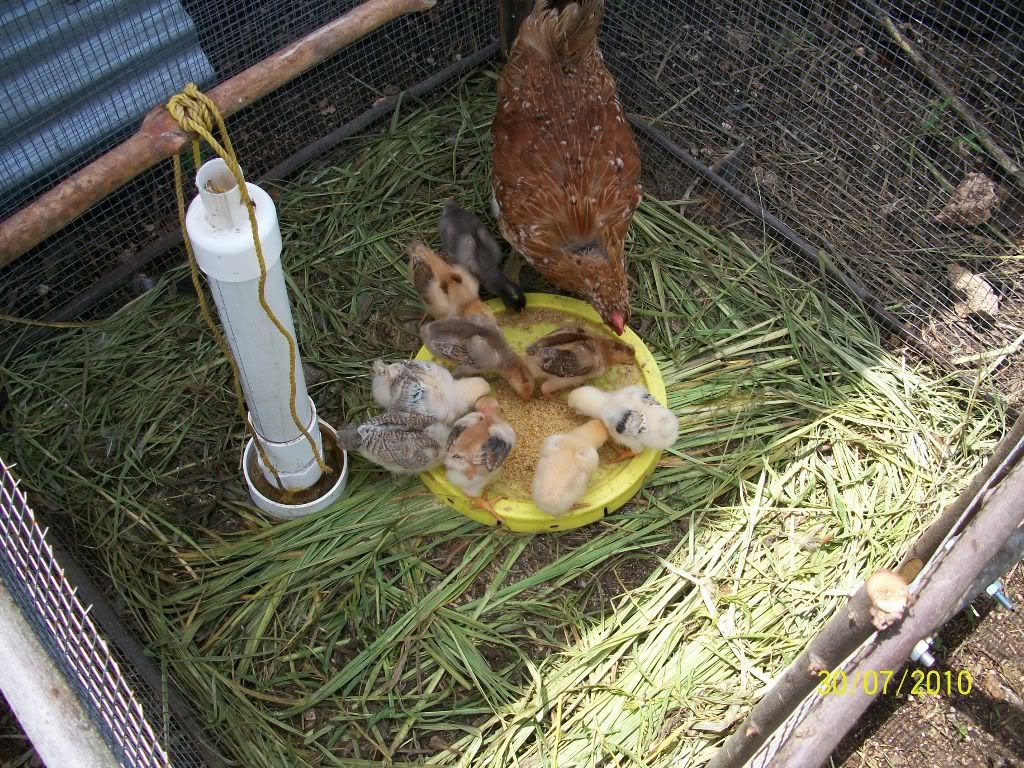
The first batch of chicks is just over two weeks old. Most of them have feathered in very nicely.

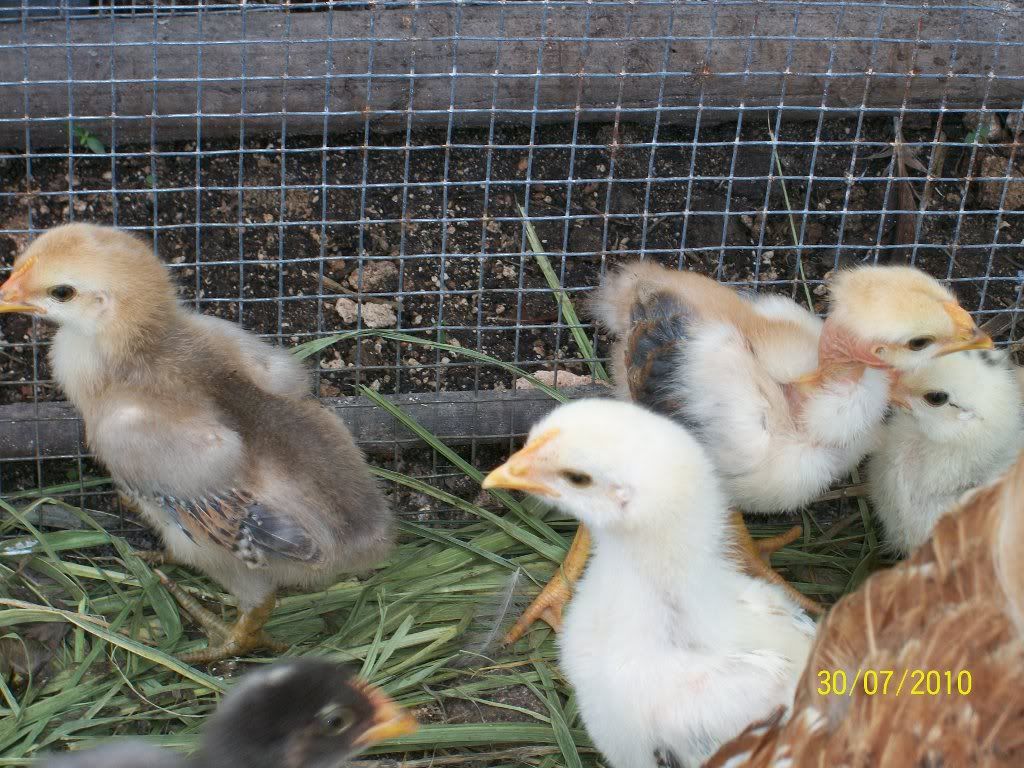
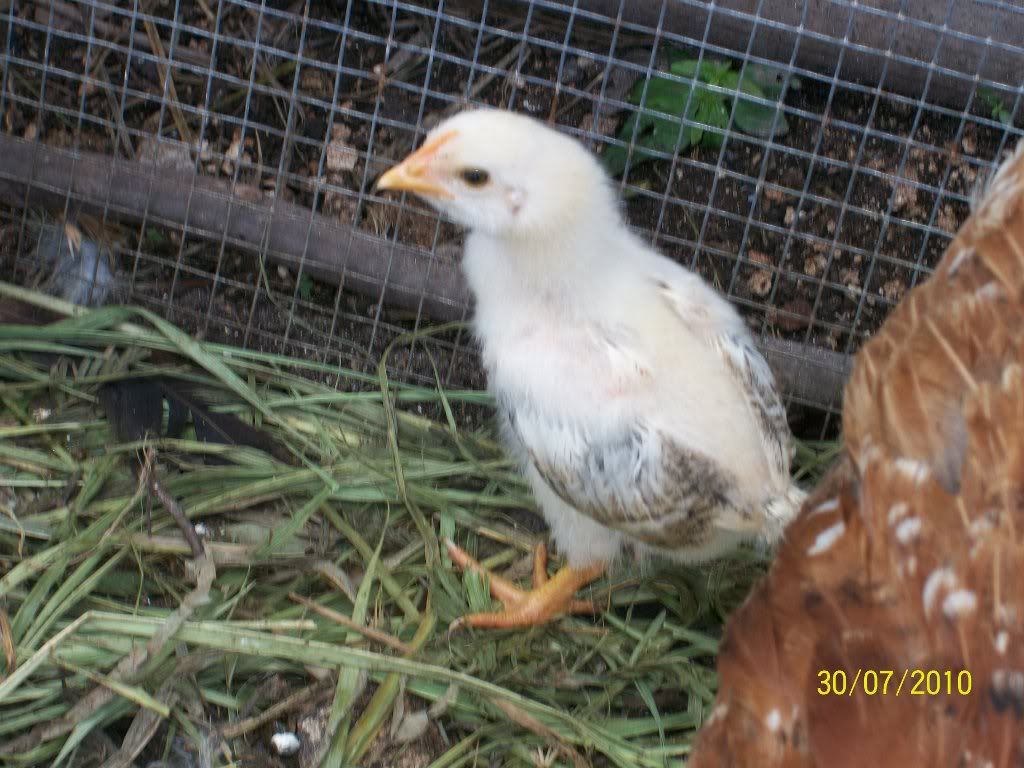
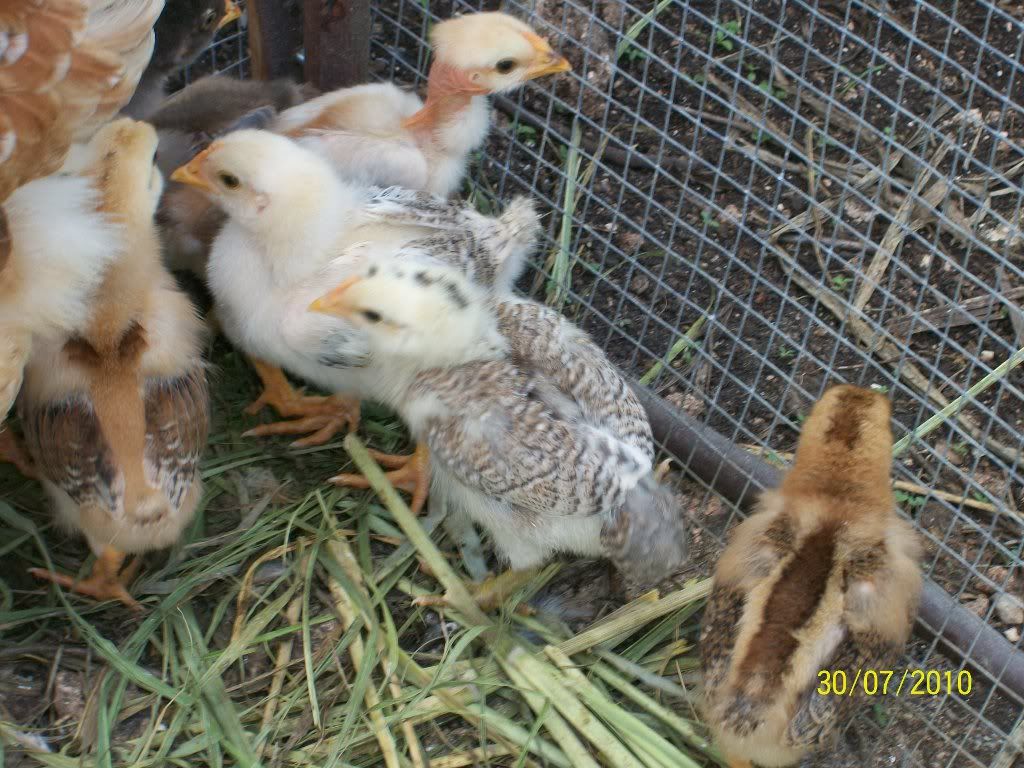
Some of them spend a fair amount of time trying to fly around the cage, or flying onto or off of their mother's back.
We had purchased some additional eggs to put under each hen. However when some eggs appeared to stick out a bit, we removed however many the hen looked unable to cover. We removed the purchased eggs rather than our own. This left very few of the purchased eggs under each hen.
In the case of the second hen, we may have removed more than was necessary. Once she got settled in she was very easily able to cover the nine eggs. But rather than put some back, we decided to just leave her be. The growling and pecking of the hen whenever she was disturbed may have influenced this decision.
In the case of the first hen, we used all our freshest eggs to put under her, adding at most four or five of the purchased eggs. At the end of hatching, three of the purchased eggs remained, and one of ours. These were discarded.
With the first hen out of lay and sitting on a nest, we had fewer fresh eggs by the time the second hen went broody. I think we may have used our own eggs that were up to two weeks old. I have read that eggs up to three weeks old may be used, but that is in the US. In our climate, probably an egg has lost viability after a week. I have been told as much by a local woman.
We know at least one of the purchased eggs hatched. We know this because one of the chicks appears to carry the naked neck gene.
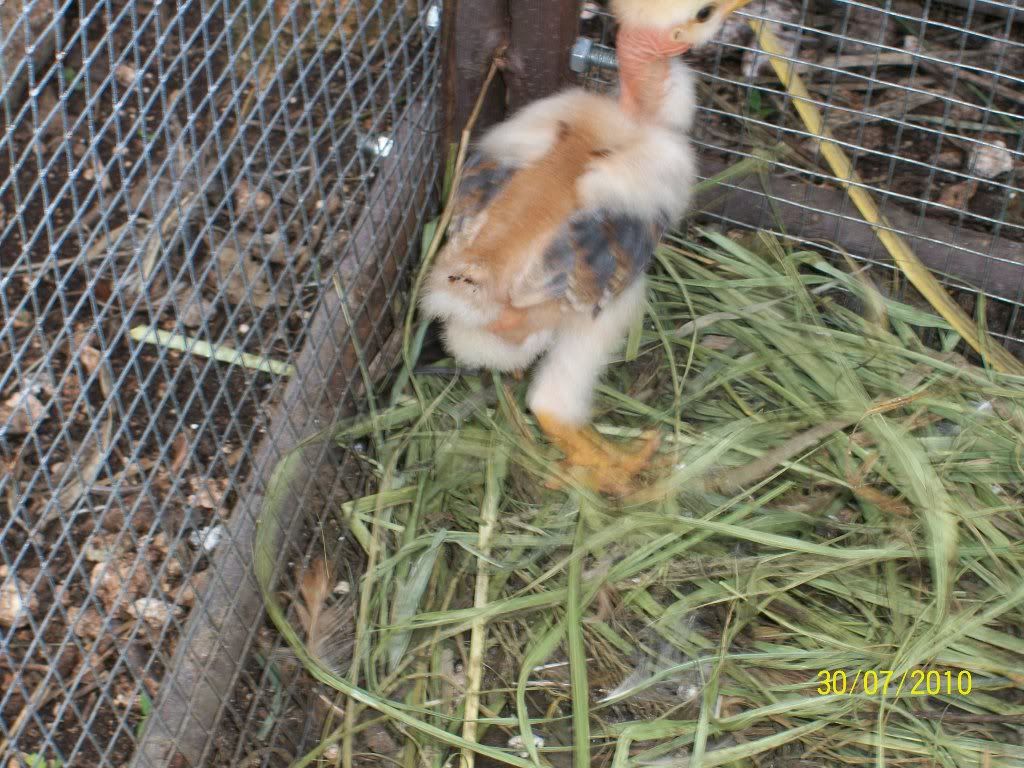
This incompletely dominant gene, if present, would show up in one of the parents. None of our adult chickens have this, so the chick must have come from the purchased eggs. The expression of this gene results in a very ugly chicken, that looks part buzzard. However aside from the ugliness, the chickens with this gene have up to 40% less feathers over their bodies. This results in better ability to handle heat, and better growth as they can use the protein in their food to grow rather than to build so many feathers. If this chick survives, we will keep it for breeding. However if it is a rooster, it will get only a few hens, and be based in a chicken tractor far enough away that I don't have to look at it very much.
We suspect one other chick hatched out from the purchased eggs. This chick's color pattern is different than the others. He looks like he has the E-Brown gene.
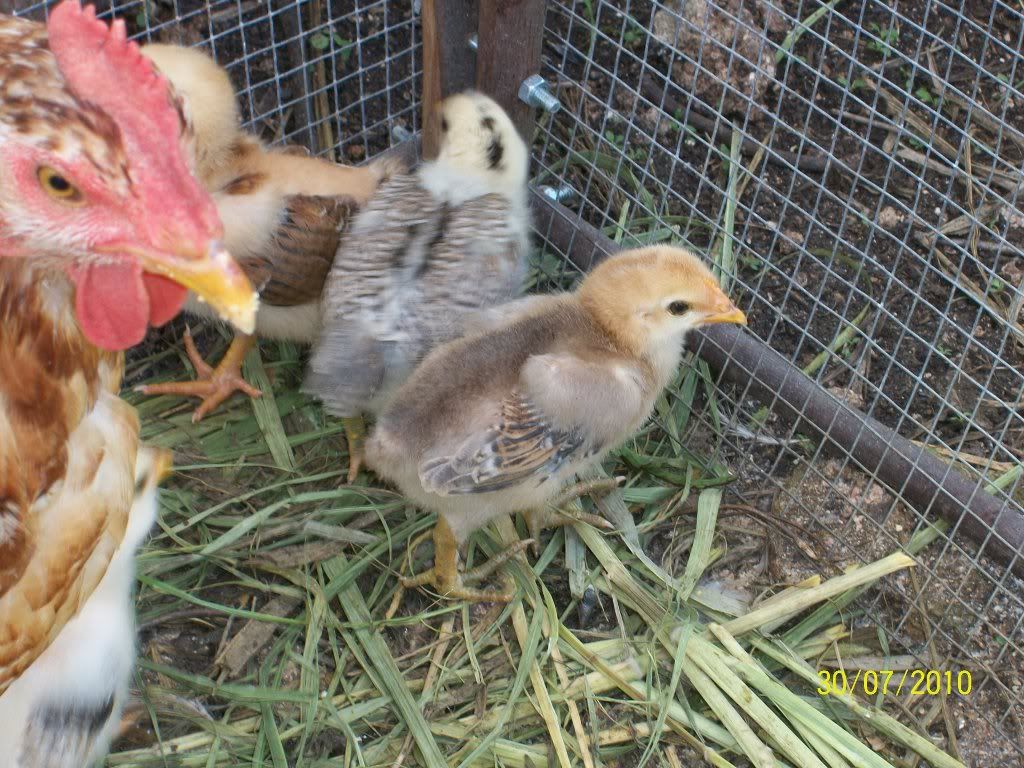
He also has feathers on his legs. There are at least three genes that can cause feathers on the feet or legs. Most of them are dominant, and none of our adult birds have such feathers. So he probably came from a purchased egg. Feathers on the legs probably are not so useful to a chicken in the tropics.
We have two chicks, one in each batch, that appear to have the E-Birchen gene. Due to the nature of this gene, the chicks down is shades of black and white. One such chick is pictured here on the far left.
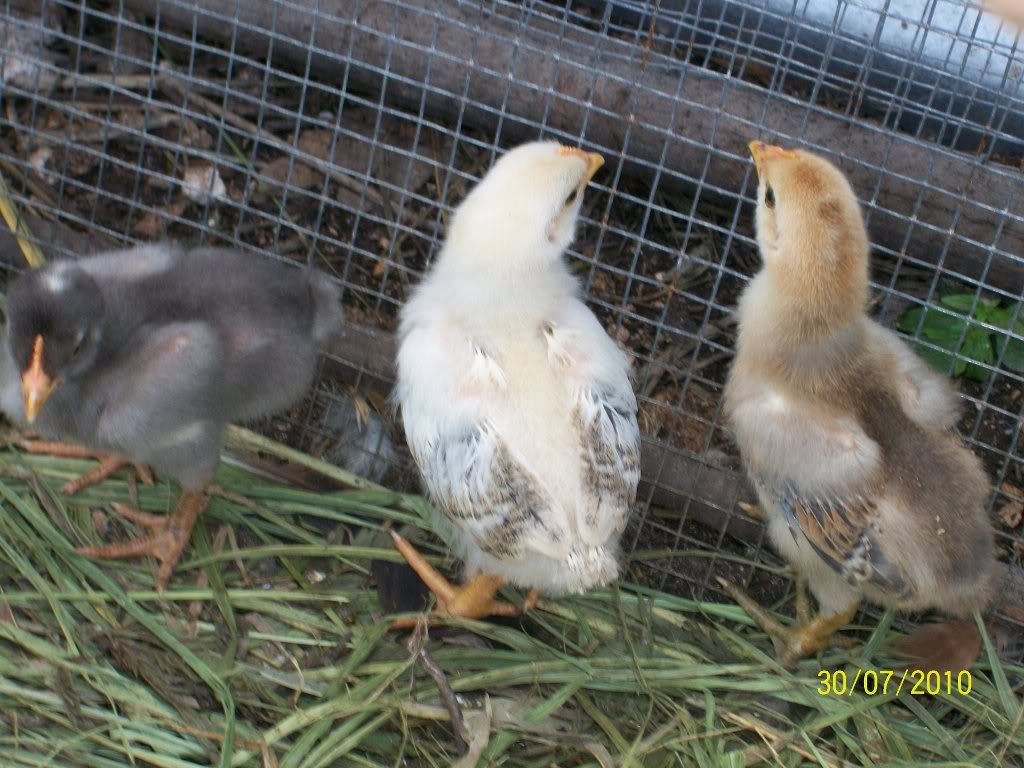
There is another gene that can cause this down, however, two of our most beautiful hens have E-Birchen. So we have two probable offspring from one of those hens.
We have one chick that appears to carry the E-wild type gene.
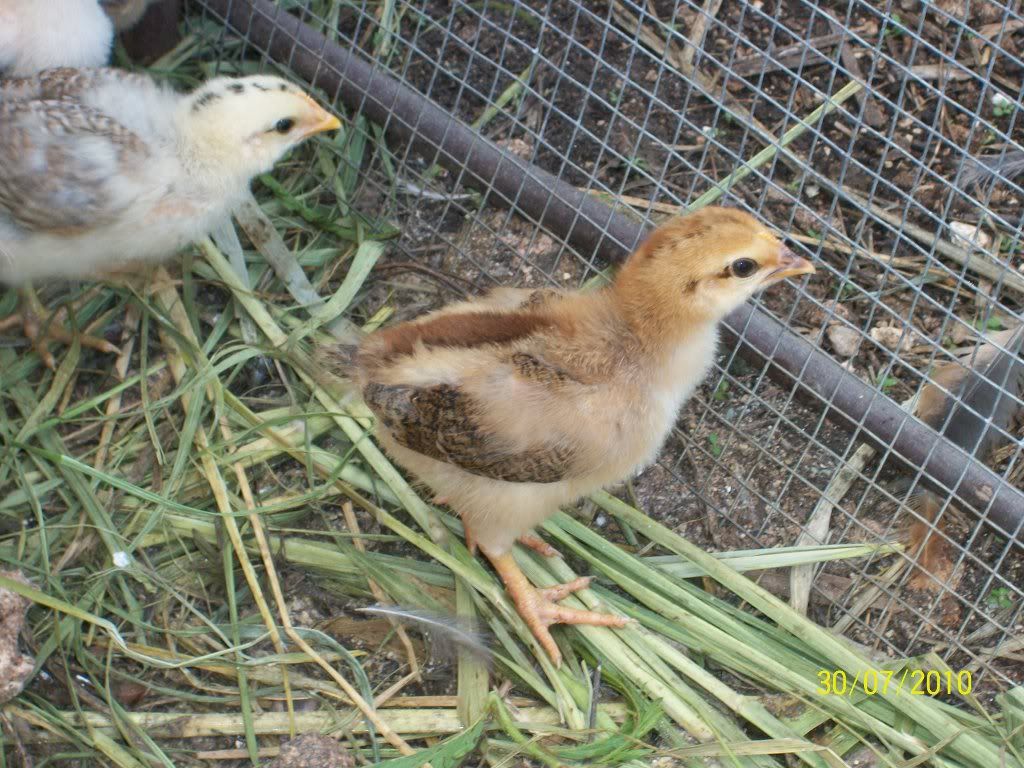
Again, we can tell this by the down color of the chick, who has a stripe down his back, a stripe across his eye, and is brownish color.
The majority of the chicks appear to be E-wheaten.
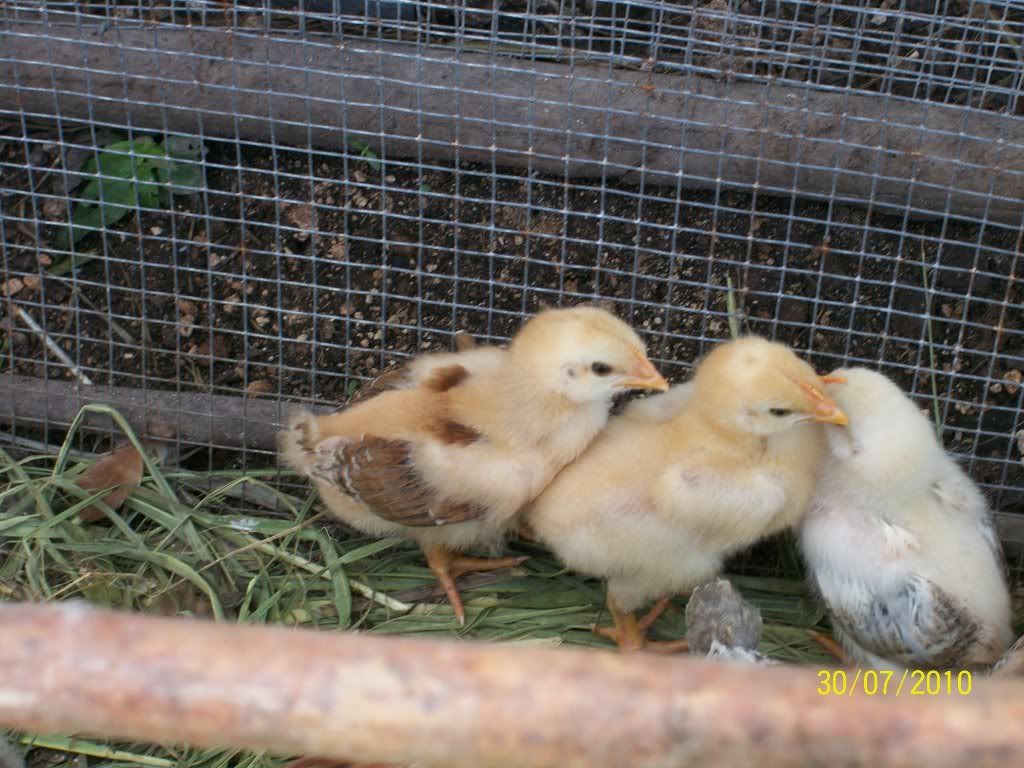
This causes the cream colored day old chick down.
Aside from the two birchen hens, we believe that the rest of the hens carry the E-wheaten gene. Based on the numbers of the chicks that show this coloration, and the fact that E-wheaten is thought to be very recessive, we believe that our rooster, Josiah, carries E-wheaten.
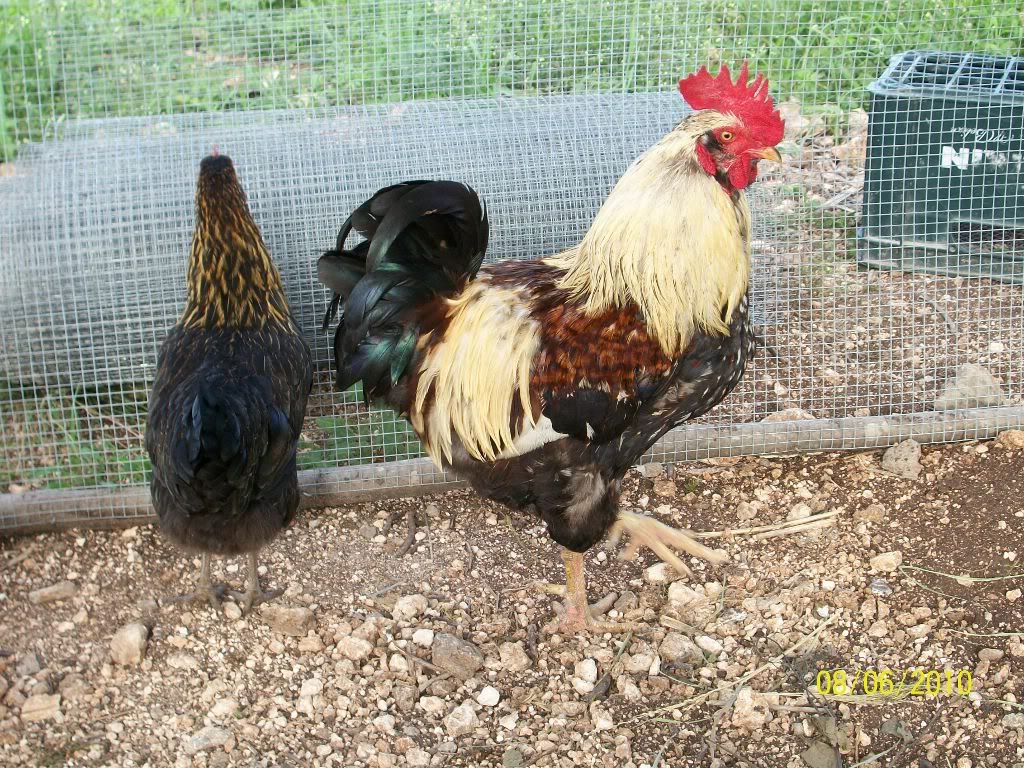
A chicken gets two E genes, so in addition to wheaten, we think that Josiah also carries E-wildtype. His appearance seems to be like pictures I have seen of the E-wildtype roosters.
Two of the chicks in the first batch, and one of the chicks in the second batch, have not feathered at all yet. This includes both of the presumed birchen chicks. There is a gene that causes slow, delayed, or retarded feathering. I do not fully understand the expression of this gene, as it is described as having an effect on the feathering in after molt rather than the down replacement feathers. However I suspect that these three have this slow feathering trait. This is probably a good thing. Chickens with the slow feathering trait are thought to grow larger, and faster than chickens without it.
The majority of the chicks appear to be the offspring of the hen known as "Red and White", and the hen known as "Red and Red". While "Red and Red" was a good layer, she has been brooding eggs and chicks for over a month now. During this time "Red and White" has continued to lay an egg almost everyday. The only supplemental feeding she has been getting has been a small amount of corn. We want more chickens like her.
We also have two black and gold birchen hens. Birchen is a color pattern, not a breed. These two are very tough chickens, and very beautiful. However they are far behind the others in egg production. But one is brooding chicks and the other is still very young.
Also there is "Little Red hen", a chicken that lays every other day. However she lays an enormous extra jumbo large egg. So, that's all good too.
In an attempt to get more eggs, and more hens that will go broody, we have purchased two more hens. These may have been a bad deal. Christopher thought they looked diseased. They are a slightly different kind of chicken. I think they are the kind of chicken grown by the Creole people. A bit longer legged and larger. We have had them for about a week. It seems likely they were just in molt, as at least one of them now has pin feathers growing all over her where she lacked feather covering before. No pictures of these yet. I am almost afraid to mention them let alone photograph them. I still harbor the fear that they really are diseased and will give all the other chickens mites or lice or chicken AIDS or something. (To my knowledge, there is no such thing as chicken AIDS.)
We want a few more adult chickens. We may try to buy some more from the man in Patchakan that sold us the first three red chickens.

They have worked out very well for us. I would like a dozen of the black and gold ones, but my friend does not have any to spare at the moment.
5 comments:
Very interesting!
I am glad you found it interesting.
If by some strange chance you happen to be deeply interested in chicken genetics, here are two sites that I am reading over and over.
This website is designed for exhibition breeders of domestic fowl (chickens), to help with understanding genetics of chicken breeds and varieties.
http://www.edelras.nl/chickengenetics/
and
Poultry Genetics for the Nonprofessional
http://sellers.kippenjungle.nl/page0.html
John, so glad to see the blog concerning the chickens!
The peeps are too cute. I
I can't wait to take the
path back to the chicken
coop and hold them. They
will be pretty well grown by
then but you'll have new ones
I'm sure.
Dad is enjoying the blogs very
much too.
Interesting stuff, John. You seem to have begun the process of mastering the complex "ins-and-outs" of raising chickens.
And, typically for you, you seem to be grabbing hold of the matter from the top (productivity, feed cost, etc.) to the bottom (genetics -- don't think ya get much more "bottomy" than that!).
I'm looking forward to coming chapters of the "Saga of the Chickens."
Oh StormRider it is faintly restrained Chaos. We have not begun to master anything yet. I have learned a great deal about chickens from books and talking with people.
But all of that is just attempting to catch up with what is happening.
Today again we let the Red hen and her chicks out of the cage for a little walk. The little peeps can fly now. As I approached the cage about half of them were flying around in there like little finches or something.
We opened the door and after a few minutes of calm exploration the fliers take off running around a corner then flying off into the tall grass. The hen does the same. Three of the peeps head back to the cage.
Then it hits us. How do we get the others back in the cage? Eventually the hen decided that walk about time was over and all the peeps needed to go back with her. But we did not really know she would do that. And we did not know when.
The peeps or chicks are probably old enough that they could be out all day. But we are afraid of predators.
Ferocious the highly predatory cat, wandered into the house yesterday, jumped up on a chair and commenced to eat a large rat.
He finds these out in the tall grass. Where the chicks go. Rats and cats are both big enough to kill the chicks.
There is no mastery.
Post a Comment